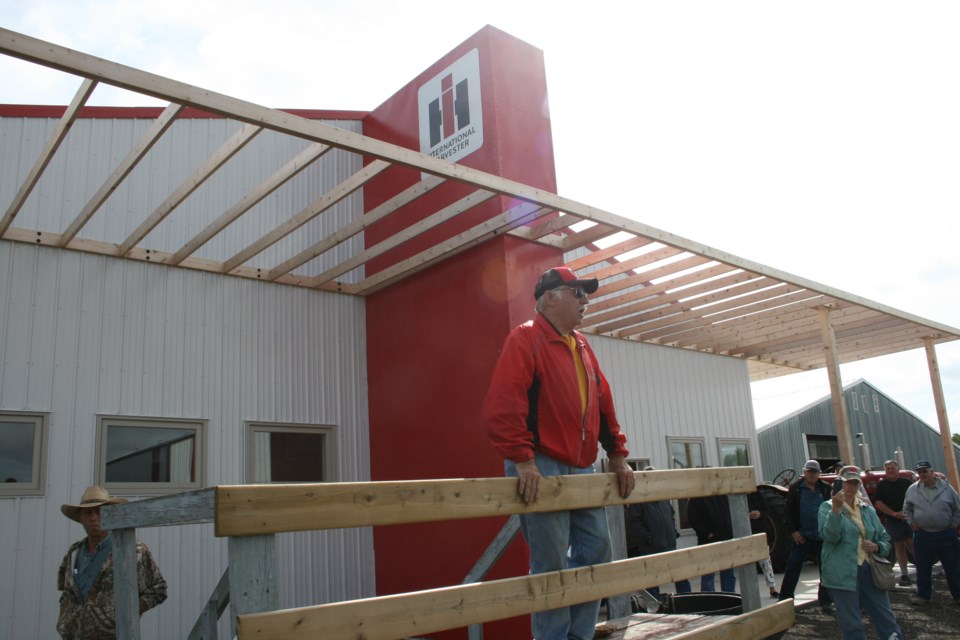A replica dealership from one of America’s top farm machinery makers recalls the heyday of the International Harvester Company (IHC) at the Sukanen Ship Pioneer Village and Museum.
“We’re proud to have this building,” museum president Gord Ross told the dealership grand opening. When the IHC Collectors Chapter 38 approached the museum with the project “we jumped at the opportunity.”
Third generation International Harvester farmer Darald Marin of Chapter 38 noted the dealership plan began years ago after the Algott family of Derwent, Alberta offered the complete array from the IHC dealership they closed in 1985 if someone put up a suitable building.
“Hopefully here in Moose Jaw it will be preserved in perpetuity.
“They had an International dealership since the 1920s. There were three generations when they closed out in 1985 when Case amalgamated with International.”
Displays aren’t complete and will be changed regularly from the “reserve of stuff we have.”
The family had a good dealership until closed out by sale of IHC to a competitor.
Marin explained why International Harvester is such an industry icon and why the company failed.
Born from the merger in 1902 of the McCormick Harvesting Company, Deering Harvester Company and a few smaller companies, IHC became the world leader in farm machinery manufacturing.
“From about 19 teens until the end of the ’40s was the heyday for International Harvester. They couldn’t do anything wrong.”
“International did some terrific things” from the 1923 FarmAll row crop tractor that could turn on a field without backing up, to the first hydrostatic drives on swathers and combines.
The IHC diesel tractor in 1936 was the first by any major farm machine maker. “It took the competition 13 years to catch up,” Marin said.
Three pivotal management mistakes led to a forced sale in 1984.
After the Second World War, Harvester decided to build the biggest crawler tractor in the world but the sales-oriented board was too hot to sell the new TD-24.
“They failed miserably. International had to go out and hand re-build all these TD-24s. They lost lots of customer support.”
Through the 1950s all farm machine companies were just tweaking models from the 1940s until John Deere introduced a six-cylinder tractor.
“International in haste to provide a competitive machine — 560s, 460s — introduced them without adequate research and development again. They sold a humungous number. They were good looking, did the job. They failed miserably after they had a few hours on them.”
IHC again lost cash when it hand-rebuilt these tractors. “In 1959 IHC lost first place position in ag sales, a position they never regained.”
The third straw for IHC was a lengthy strike in 1960.
The board saw this as an opportunity to sell excess inventory during the strike. Once the strike was over the farm economy had gained strength but IHC had no cash to keep up and started selling subsidiaries like the truck division.
Now the IHC logo has been removed from equipment, replaced by Case New Holland logos.
Ron Walter can be reached at [email protected]




